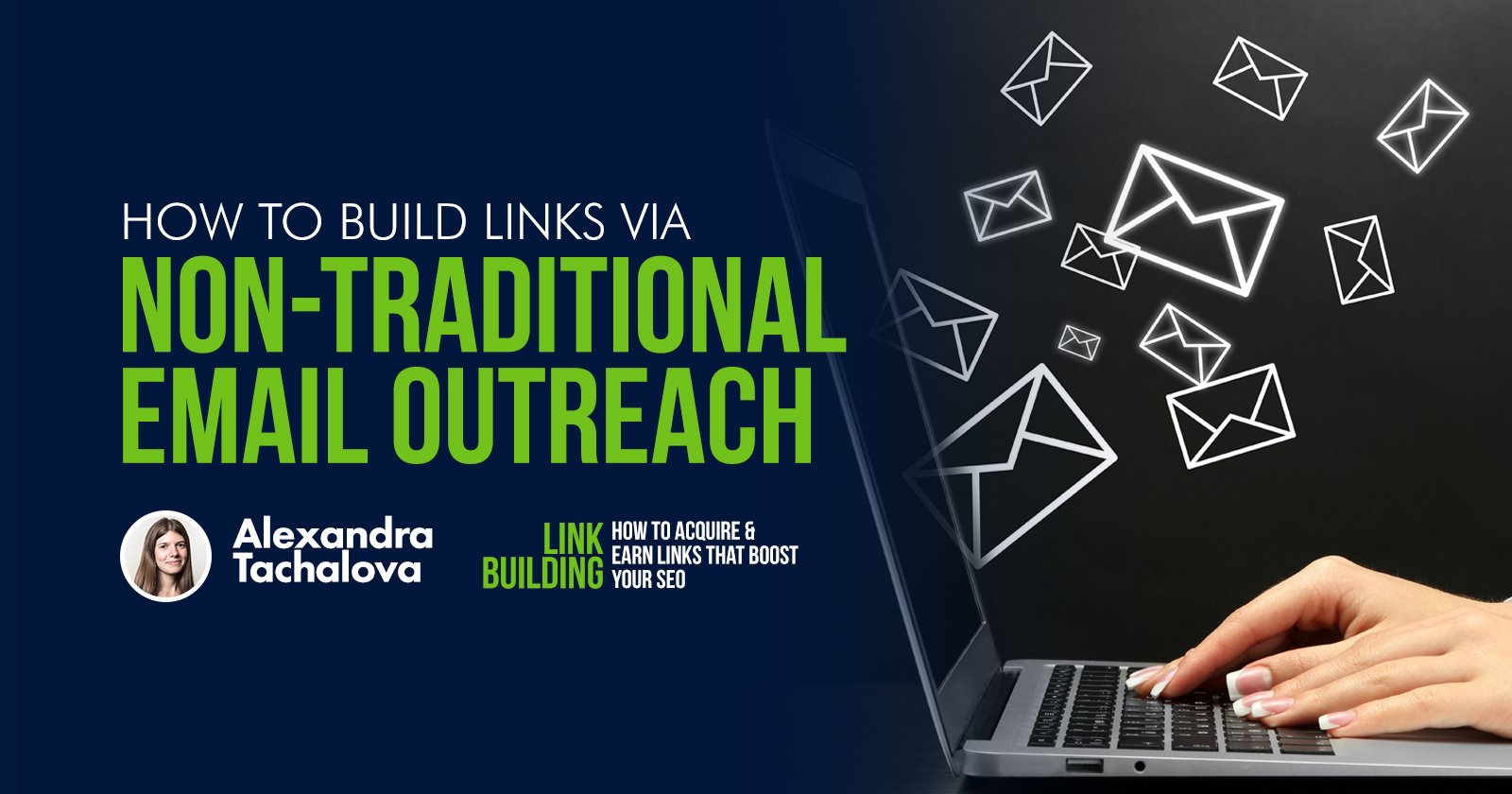Email outreach has quite a prominent presence today.
It seems that nearly every business has heard of this link building strategy before (even though the majority get it wrong about 100% of the time).
Don’t believe me?
Then open your mailbox spam folder and read through all these email outreach gems!
For instance, look at what I got only a few hours ago:
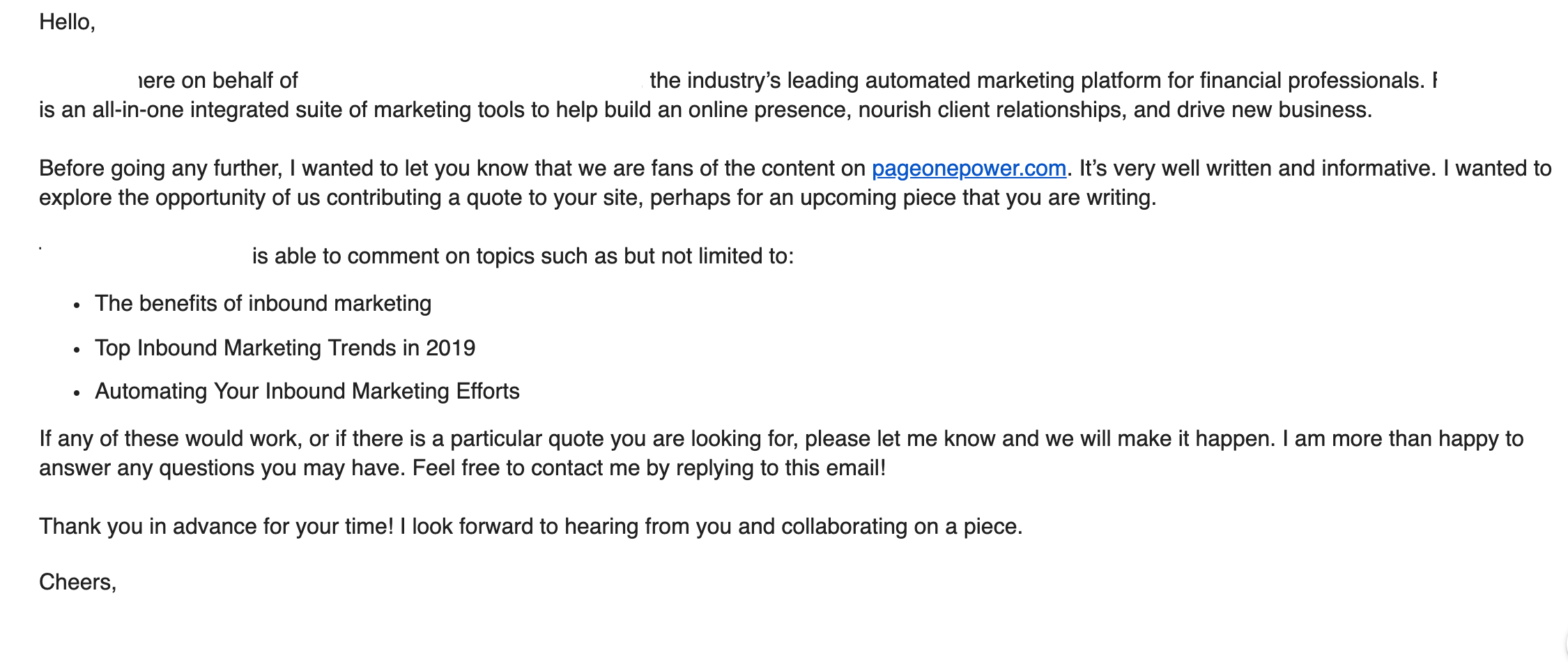
Am I an expert in the finance niche? Absolutely not!
It’s no surprise that such emails mostly go straight to the spam folder, but it’s astonishing how many emails never get any recipient’s attention at all.
Recently, Brian Dean teamed up with Pitchbox to analyze 12 million outreach emails, and one of their discoveries was that the average email response rate is 8.5%.
Just think about it! Less than 10% of emails get a response with the vast majority of 90% remaining unanswered.
If you don’t want your emails to add up to that pile, it’s crucial to keep mastering your outreach techniques and explore new approaches.
In this post, I want to do exactly that: show you a non-traditional email outreach approach that can guarantee the highest response rate for each email you send.
What Is Non-Traditional Email Outreach?
Email outreach is one of those activities that has to be scalable, which is impossible without templates and automation.
However, to deserve your reader’s attention, your emails must also be 100% authentic and personalized – all the things that don’t work well with automation.
So, what’s the workaround?
For me, it’s the non-traditional email outreach. This approach relies on two main components:
- 100% original templates.
- Using a unique brand voice.
Simply put, non-traditional outreach means using original templates that are crafted in a unique way to represent your specific business.
Not only does it guarantee a higher response rate, but it also allows your emails to stand out and create a positive attitude towards your brand.
Here are a few examples to back up my words:
G2 Starbucks/Amazon Card
The guys from G2 placed a unique spin on their brand by offering a free $10 Starbucks card in exchange for leaving a review on their site.
Do you think this idea might work well for your business?
If so, use this strategy as inspiration and adjust it for your business needs accordingly.
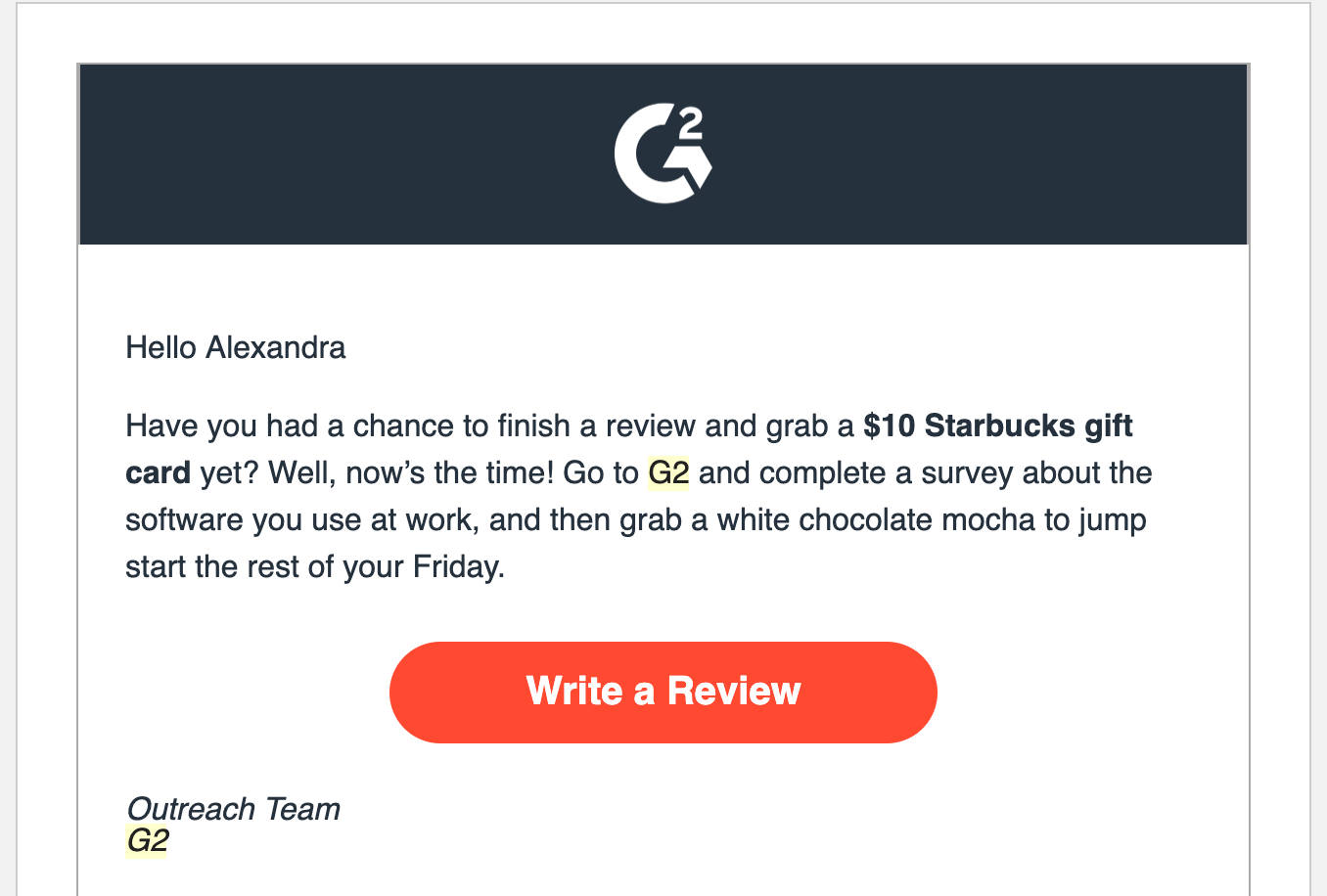
Robbie Richards’ Round-Ups
When you hear Robbie’s name, the first thing that comes to mind is an expert round-up.
I had the honor of being invited to contribute to his most recent round-up, where I shared my favorite WordPress SEO plugins along with 49 other experts.
How did Robbie pull this off?
All through email outreach.
Let’s deconstruct his approach to see exactly how it works.
To start off, Robbie reached out to well-known experts that regularly contribute to their own and external blogs:
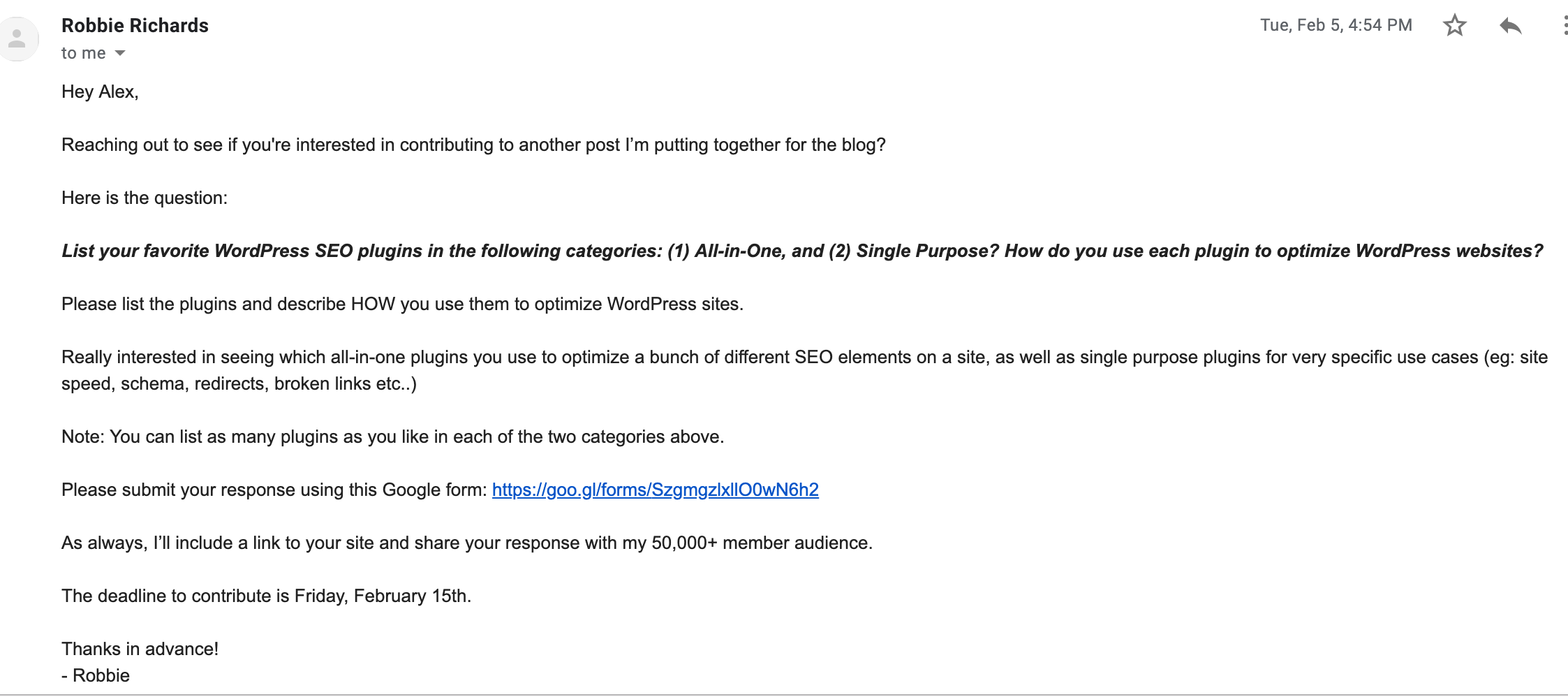
As a next step, when the post goes live, Robbie asks the experts once again if they are willing to link back to it.
This approach allows him to get links faster since the experts are automatically motivated to share content to which they contributed.
All this would be impossible if the G2 and Robbie Richards started their outreach emails with
“Hi , I’ve recently read your blog post and it was amazing! Link swap?”.
But besides avoiding standard templates overused by spammers and your competitors, there are a few other steps that will empower your next outreach campaign:
- Spend enough time during the link prospecting stage to ensure that you’re pitching your content to the right people. This might sound obvious, but the majority of marketers neglect this step and don’t really bother to double-check that their pitches will be hitting the right mailbox.
- Find ways to establish relationships with your link prospects. Do they love coffee? Send them a Starbucks gift card. Is your company a well-known brand? Reach out to them with an offer to contribute to your blog! They’ll be honored.
Use These 3 Hacks to Get There
I know for a fact that things are much more complicated in reality. This is especially so for companies that haven’t established any solid brand awareness within their niche yet.
A common question they have is where to start so that they don’t encounter the scenario where all their outreach attempts are rejected.
In my agency, we immerse solely in email outreach link building and this has resulted in the development of our own unique approach to this process.
Hence, I would like to share with you some tried and tested tactics that will help you acquire links in a few days and sometimes even hours.
1. Start with Pitching to People That Already Trust You
The most time-consuming part of the email outreach process is establishing trust.
But you’re past that point when you’re reaching out to people who already know you, who are aware of your business and have a positive attitude towards it.
You can find those people in the following groups:
- Your clients and users that are subscribed to your newsletter.
- Your partners and industry friends.
- People who have already mentioned you in their content. There’s a high chance that they’re writing for other websites, too. To find all the websites to which an author contributes, you can use BuzzSumo and search by the author’s name.
- Your current social media followers. For instance, Followerwonk can help you quickly download a list of your company’s Twitter account followers.
2. Reach out to Those Who Have Something in Common With You
There are several ways to find and engage with people with particular interests. The system that I often use looks like this:
- I find people through Facebook groups.
- Research their interests on social media.
- Engage with them through comments.
Here’s how it works in a more elaborate way.
There are plenty of closed groups on Facebook to accommodate to any interests whatsoever.
A big benefit of those groups is that they allow you to see the list of users that are members of that group even when you’re not friends with them. So, just search for groups within your niche and join them.
After this, scan for users that are part of those groups and reach out to those who are also running blogs for their company.
Use comments as an ice-breaker. Find posts that have already gained a lot of attention (in terms of engagement) and leave a comment there.
After this, you can write to users that were also leaving comments under this post and let them know that you have interacted with them before.
Finally, find out what they were sharing on their blogs or social media that you’re also a big fan of.
Cats and dogs? Horses? Or maybe burgers and craft beer?
This phase is truly time-consuming, but the results are really worth it.
3. Make Your Email a Bit Awkward
Excuse me, what?
That was my reaction when I first found out that awkward emails are super effective.
But this idea is reinforced by psychologists who confirm that awkward or clumsy behavior is a well-known conceptual move that helps them gain people’s trust much quicker.
However, email outreach doesn’t involve face-to-face communication where you can drop a pen or spill a coffee. So, how exactly can you do that?
You can do this by telling your recipient a short story of your professional failings, or purposely spell their name wrong and then fix it in the second sentence. Here’s how I did it one time:

Basically, anything that makes them feel that a real human being is reaching out works.
Another quick trick is to use custom-made GIFs about your life or even yourself. Once I used a GIF of my horse to pitch content:
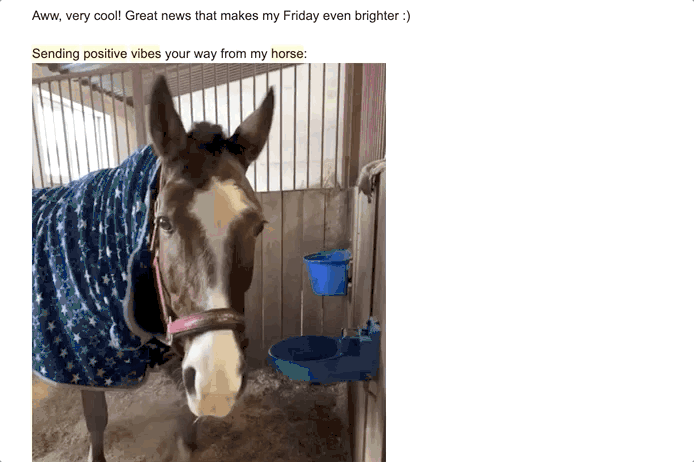
Final Thoughts
Non-traditional email outreach involves putting a distinctive spin on the marketing of your business.
By using the three hacks mentioned above, which are:
- Reaching out to people who are already familiar with your business.
- Approaching people with common interests.
- Making your emails slightly awkward.
…you appeal to their human side which makes getting a response much more likely.
So get out there and craft your next big outreach email!
Summary
Timeframe: Ongoing
Results detected: 4-12 months
Average emails sent per month: 40
Tools:
- Buzzstream
- Yesware
- Boomerang for Gmail
- Muckrack
Benefits of email outreach:
- Email outreach creates a rare opportunity for you to develop a personal connection with an influencer or brand to sustain and grow a long-term relationship.
- Email outreach can increase your network not from only a linking perspective, but social media as well.
Image Credits
Featured Image: Paulo Bobita
All screenshots taken by author, May 2019

